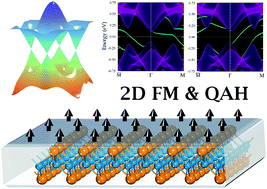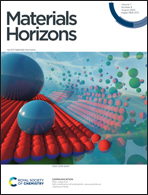Two-dimensional Dirac spin-gapless semiconductors with tunable perpendicular magnetic anisotropy and a robust quantum anomalous Hall effect†
Abstract
A major recent breakthrough in materials science is the emergence of intrinsic magnetism in two-dimensional (2D) crystals, which opens the door to more cutting-edge fields in the 2D family and could eventually lead to novel data-storage and information devices with further miniaturization. Herein we propose an experimentally feasible 2D material, Fe2I2, which is an intrinsic room-temperature ferromagnet exhibiting perpendicular magnetic anisotropy (PMA). Using first-principles calculations, we demonstrate that single-layer (SL) Fe2I2 is a spin-gapless semiconductor with a spin-polarized Dirac cone and linear energy dispersion in one spin channel, exhibiting promising dissipation-less transport properties with a Fermi velocity up to 6.39 × 105 m s−1. Our results reveal that both strain and ferroelectric polarization switching could induce an out-of- to in-plane spin reorientation in the 2D Fe2I2 layer, revealing its advantage in assembling spintronic devices. In addition, spin–orbit coupling (SOC) triggers a topologically nontrivial band gap of 301 meV with a nonzero Chern number (|C| = 2), giving rise to a robust quantum anomalous Hall (QAH) state. The 2D crystal also exhibits high carrier mobilites of 0.452 × 103 and 0.201 × 103 cm2 V−1 s−1 for the electrons and holes, respectively. The combination of these unique properties renders the 2D Fe2I2 ferromagnet a promising platform for high efficiency multi-functional spintronic applications.



 Please wait while we load your content...
Please wait while we load your content...